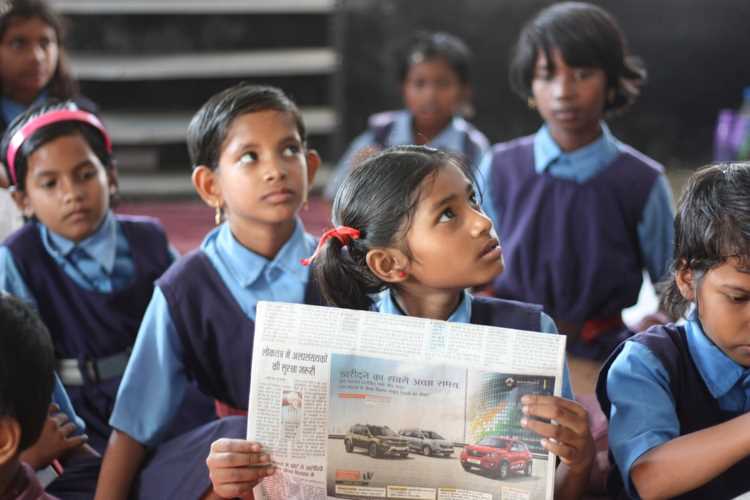Demographic dividend: India will become the most populous country in the world next year, overtaking long-time leader China, according to the 27th edition of the United Nations report, World Population Prospects 2022. India is fast catching up with China’s 1,426 million population with a marginally lower 1,412 million this year. The report comes at a time when there are concerns about the decrease in fertility rates across the globe.
In the coming decades, China’s population is going to decrease while India’s will rise. The global population is estimated to touch 8 billion on November 15, 2022 which is more than triple of the population of 2.5 billion in 1950. With a rising population, India may need to take into account how it will utilise the potential of its vast human resource. Moreover, a thriving population also needs thriving natural resources. Is India in a position to help its citizens dwell?
READ ALSO: The nations within: Inequality poses a big challenge for India
Can India gain from demographic dividend?
A growing population can be both a boon or bane to a country depending on how it utilises the potential. When the working population of a country is higher than its ageing population that leads to a boom in the economy. This growth in the economy due to the higher number of its working population is called the demographic dividend.
China, for instance, had successfully made use of its working population. During the first half of the demographic dividend which was during 1980-95, the Chinese economy achieved rapid growth averaging 10.2% annually. The demographic dividend in China coincided with its economic boom, thus further fuelling an already rapidly growing and dynamic economy. India too must look to benefit from the demographic dividend, taking lessons from the Chinese experience.
India’s demographic dividend is at an inflection point currently and from hereon, the population share of the youth is expected to taper off and the share of elderly is expected to surge till 2036. The populous states of Bihar and Uttar Pradesh experienced a rise in proportion of youth population to total population till 2021. However, the population in these states will begin age, according to the Youth in India 2022 report released by the ministry of statistics and programme implementation.
The youth in India (those in the age group of 15-29 years) comprise 27.2% of the population for 2021, which is expected to decrease to 22.7 by 2036, the report says, citing the findings of the report of technical group on population projections 2020, constituted by the ministry of health and family welfare. Bihar and Uttar Pradesh, along with Maharashtra, Madhya Pradesh and Rajasthan, are projected to have over half (52%) of the country’s youth.
Challenges ahead
The rise in population translates into an increased need for resources not just to feed, but also to house citizens. This means an increase in burden on nature which is already reeling under stress due to lack of replenishment. The UN population report must also be read in that light. India, which is one of the most fertile lands in the world, still ranks high on the world hunger index. So, feeding this large population is one challenge.
Secondly, the groundwater resources are fast depleting which have caused enormous strain to the residents of villages of Rajasthan and Madhya Pradesh recently. Even the poshest localities in the National Capital Region were not spared from the water crisis. The climate change menace is another worrisome phenomenon. Then, one cannot ignore that several states in India are expected to have larger number of elderly people compared with the youth. States such as Kerala, Tamil Nadu and Himachal Pradesh are estimated to have a higher elderly population by 2036.
As India approaches 100 years of freedom, it will be blessed with a massive workforce that will cast a long shadow. In the time to come, one in five working-age persons globally will live in India. This comes with its own set of challenges as a sizable working-age population does not mean many workers. This is because in India, many women of working age are left out of employment opportunities due to family constraints, inability to find suitable jobs and apprehension at the end of employers to provide work to female employees.
Only about 30% of women aged 15 and above are employed either in wage work on family farms and businesses. The onus is on the government and institutions to help women find employment in case it wants to reap the benefits of demographic dividend.
The boom in the youth population at present will result in a greater proportion of elderly in the population in future. Which translates to an increased demand for better healthcare facilities and development of welfare schemes and programmes for elderly people for the future. In the case of the southern states, where the share of the dependent population is predicted to increase, the government must look at ways to support the dependent population, providing social security, pension and healthcare for the aged.
Further, the quality of life must be ensured for citizens. One in 10 Indian women currently have an unmet need for contraception which means approximately 22 million women want to stop or delay childbearing, but do not have access to a method of contraception. The focus should be on providing women access to family planning services. According to analysts, the government must look at investing in education, health and creating economic opportunities for young people in order to achieve demographic dividend.

